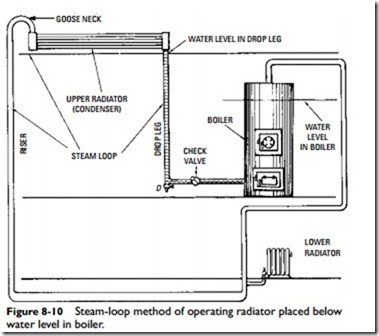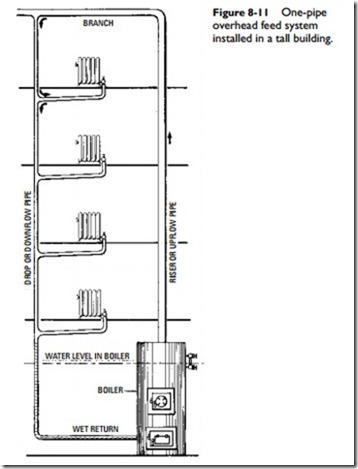Downfeed One-Pipe System
The downfeed one-pipe system (also referred to as the one-pipe oversystem or simply the downfeed system) is characterized by having the heat-emitting units located below the supply mains. The condensate drips through the risers, thereby keeping the supply main relatively free of condensate.
The downfeed one-pipe system is well suited for buildings 2 to 5 stories high because, if the heat-emitting units were fed from below, the risers would have to be excessively large. Instead of a steam main encircling the basement, the main is carried to the attic, forming a central riser for all the heat-emitting units. The branches in the attic correspond to the mains in the systems already described but do not carry any condensate from the heat-emitting units. These branches connect with the drops or downflow pipes that feed the heat-emitting units and drain the condensate.
As shown in Figure 8-11, steam flows from the boiler up the central upflow pipe through the branches and down through the drops or downflow pipes. Because the branches are inclined, any water or condensate in the steam drains into the upflow riser. The steam passes to the heat-emitting units through the connecting pipes. Condensate forming in the units drains through these connecting pipes into the downflow pipes. Air valves or vents are provided to rid the system of air. It should be noted that there is no reverse flow
of condensate in the drop pipes. As a result, pipe sizes can be made smaller, because with parallel flow, steam velocities can be higher than in the one-pipe system.

